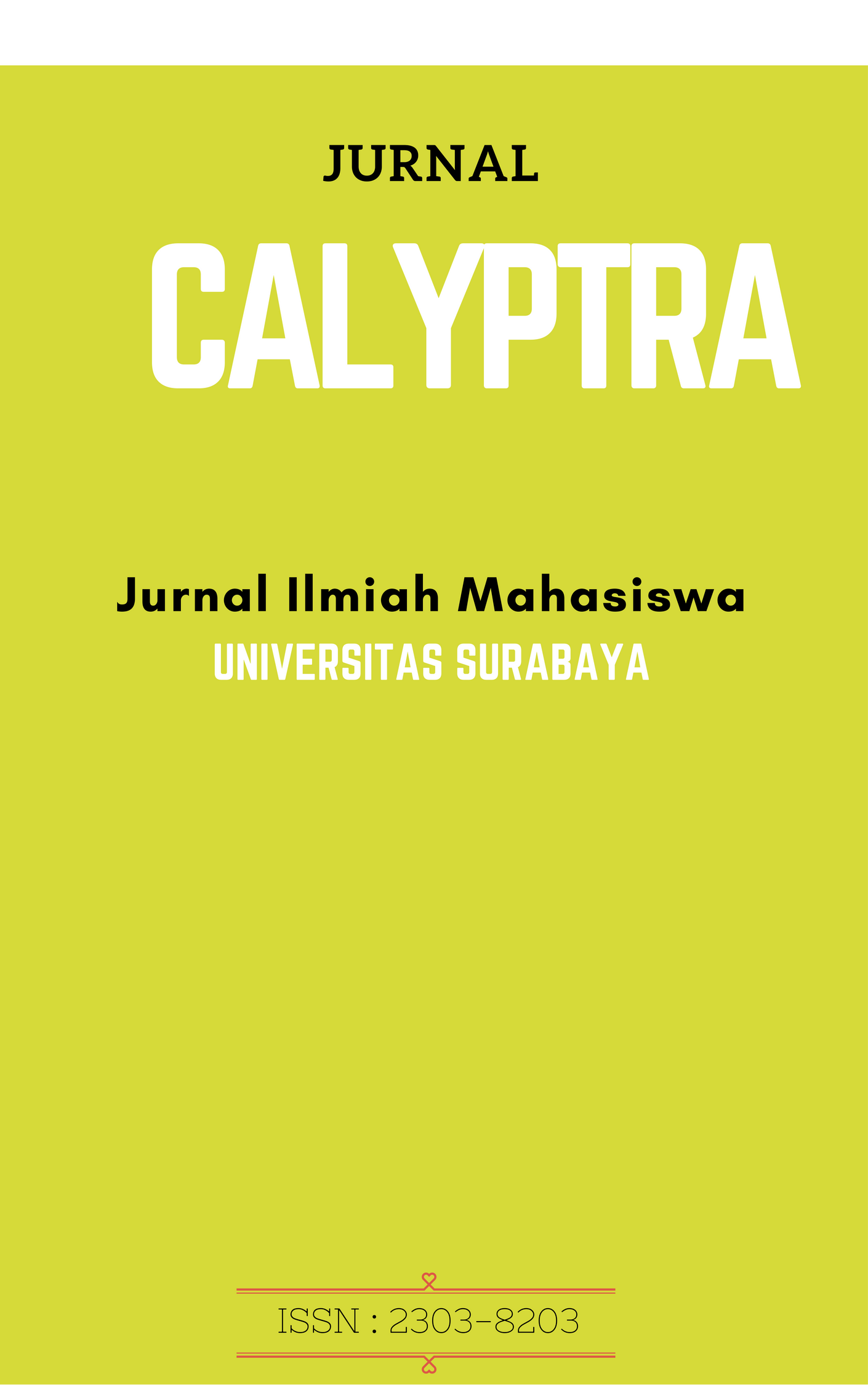SURABAYA DENGAN MENGGUNAKAN NEW SEVEN TOOLS
 Abstract Views:
1167 times
Abstract Views:
1167 times
 PDF - FULL TEXT Downloads:
1428 times
PDF - FULL TEXT Downloads:
1428 times
Abstract
Abstrak: Berdasarkan permasalahan yang ada pada perusahaan, tujuan dari penelitian ini adalah untuk mengetahui bagaimana pengendalian kualitas roti di Toko Roti Glory Surabaya dengan menggunakan metode New Seven Tools sehingga dapat meminimalkan kecacatan yang terjadi.Metode New Seven Tools dimulai dengan mengidentifikasi akar permasalahan pada perusahaan dan kemudian menetapkan upaya-upaya untuk menemukan solusi yang bisa dilakukan perusahaan. Dalam penelitian ini, alat-alat yang digunakan adalah affinity diagram, tree diagram, matrix diagram, arrow diagram dan process decision program chart (PDPC). Hasil yang didapat dari penelitian menggunakan metode New Seven Tools ini adalah metode pengendalian kualitas roti untuk mengurangi kecacatan. Dengan hasil ini, perusahaan dapat meminimalkan masalah kecacatan yang terjadi dan dapat mengembangkan bisnisnya secara efektif dan efisien.
Kata kunci: Kualitas, Pengendalian Kualitas, New Seven Tools
Abstract: Based on the problems that exist in the company, the purpose of this study was to determine how to control the quality of bread at the Bakery Glory Surabaya using the New Seven Tools to minimize defects that occur.New Seven Tools method begins by identifying the root causes of the company and then assign efforts to find a solution that could be done by the company. In this study, the tools used were affinity diagrams, tree diagrams, matrix diagrams, arrow diagrams and process decision program chart (PDPC). The results obtained from studies using the New Seven Tools of this is the bread quality control methods to reduce disability. With this result, the company can minimize the problem of disability is happening and be able to develop its business effectively and efficiently.
Keywords: Quality, Quality Control, New Seven Tools
Downloads
References
Amjad, Muhammad, 2002, Application of Seven New QC Tools.
Brassard, M., Field, C., Oddo, F, Page, B., Ritter, D. & Smith, L, Salem, NH., 2000, Typical flow to application of M7
Dian Mardi, 2008. Identifikasi Resiko Ergonomi pada Stasiun Perakitan Daun Sirip Diffuser di PT X.Skripsi JurusanTeknik Industri Universitas Trisakti. Jakarta
Diaz, C., 2001The new seven Q.C. tools
Feigenbaum, Armand. V. 1991. Total Quality Control. Third Edition. Mc Grow Hill Book. Singapore
Ishikawa, Kaoru, 1989, Teknik Penuntun Pengendalian Mutu, Edisi Pertama, Penerbit PT Mediyatama Sarana Perkasa, Jakarta,
Kotler, Philip. 2002. Marketing Management, Millenium Edition North Western University New Jersey, Prentice Hall Inc.
Nasution, M. N.,2005, Manajemen Mutu Terpadu, Ghalia Indonesia, Bogor
Nayatani, Eiga, Futami, Miyagawa, & Loftus, 1994, The seven new QC tools : Practical applications for managers
Partadireja, Ace, 1985,Pengantar Ekonomi, BPFE-UGM, Yogyakarta,
Seven New Quality Tools for Managers and Staff. 1979. translated into English 1983
Shahin et al., 2010 Proposing an Integrated Framework of Seven Basic an New Quality Management Tools and Techniques: A Roadmap
Tague, N. R., 2004. The Quality Toolbox, Second Edition, ASQ Quality Press
Tague, N. R., 2005,The quality toolbox. (2th ed.). Milwaukee, Wisconsin: ASQ Quality Press
https://eriskusnadi.wordpress.com/2012/12/22/about-7-new-qualitytools/diunduh pada tanggal 16 Oktober 2015
http://asq.org/quality-press/display-item/index.html?item=H1224 diunduh pada tanggal 22 Oktober 2015
http://blog.trisakti.ac.id/dianmardi/feed/ diunduh pada tanggal 9 November 2015
https://id.wikipedia.org/wiki/Rotidiunduh pada tanggal 30 Oktober 2015
http://www.syque.com/quality_tools/toolbook/PDPC/how.htmdiunduh pada tanggal tanggal 6 November 2015
http://www.eurekapendidikan.com/2014/10/definisi-metode-menurut-paraahli.htmldiunduh pada tanggal 23 Oktober 2015
http://surabayakita.com/index.php?option=com_content&view=article&id=7042:menggiurkannya-bisnis-bakery-and-cakesshop&catid=59:ekonomi-bisnis&Itemid=201diunduh pada tanggal 22 Oktober 2015
http://finance.detik.com/read/2014/10/23/131755/2727598/4/perputaranuang-di-bisnis-roti-dan-kue-capai-rp-20-triliun-tahundiunduh pada tanggal 23 Oktober 2014
http://economy.okezone.com/read/2014/10/23/320/1056039/omzet-bisnisroti-tembus-rp20-t-di-2014diunduh pada tanggal 23 oktober 2015
http://www.bps.go.id/linkTabelStatis/view/id/1072diunduh pada tanggal 25 Oktober 2015
http://www.kompasiana.com/anindyayukiran/ukm-dan-pertumbuhanperekonomian-indonesia-sejalankah-dengan-persiapan-dalammenghadapi-afta-2015_54f7bc5aa33311191c8b49acdiunduh pada tanggal 6 November 2015
http://wiratech.co.id/keunggulan-dan-kelemahan-usaha-kecil-danmenengah/diunduh pada tanggal 9 November 2015
http://economy.okezone.com/read/2014/08/11/22/1022744/presdirbreadlife-bisnis-bakery-sangat-menjanjikandiunduh pada tanggal 9 November 2015
http://www.halalmui.org/newMUI/index.php/main/detil_page/8/2015 diunduh pada tanggal 14 November 2015
http://ekonomisajalah.blogspot.co.id/2015/10/keunggulan-dan-kelemahanumkm-usahdiunduh pada tanggal 6 November 2015
http://teknikindustriitm.blogspot.co.id/2009/12/tujuan-pengendaliankualitas.htmldiunduh pada tanggal 25 Oktober 2015
https://id.wikipedia.org/wiki/Pengendalian_mutudiunduh pada tanggal 25 Oktober 2015
http://ekonomisajalah.blogspot.co.id diunduh pada tanggal 3 November 2015
http://pengertian-pengertian-info.blogspot.co.id/2015/09/pengertian-dantujuan-pengendalian.htmldiunduh pada tanggal 11 November 2015
http://imti.ie.ui.ac.id/informasi-akademis/seven-basic-quality-tools/ diunduh pada tanggal 23 Oktober 2015
https://eriskusnadi.wordpress.com/2012/02/10/tentang-matrixdiagram/diunduh pada tanggal 22 Oktober 2015
http://citizendaily.net/jatim-punya-koperasi-dan-umkm-terbaik-yang-siapbersaing-di-mea/diunduh pada tanggal 3 November 2015
http://www.pojokpitu.com/baca.php?idurut=5407&&top=1&&ktg=Jatim&&keyrbk=Ekonomi%20Dan%20Bisnis&&keyjdl=meadiunduh pada tanggal 11 November 2015
https://id.wikipedia.org/wiki/Segmentasi_pasardiunduh pada tanggal 3 November 2015
https://www.tripadvisor.co.id/Restaurants-g297715-zfg9901-
Surabaya_East_Java_Java.html#MAINWRAPdiunduh pada tanggal 26 Januari 2016
https://www.tripadvisor.co.id/PressCenter-c6-About_Us.htmldiunduh pada tanggal 26 Januari 2016
- Articles published in CALYPTRA are licensed under a Creative Commons Attribution-ShareAlike 4.0 International license. You are free to copy, transform, or redistribute articles for any lawful purpose in any medium, provided you give appropriate credit to the original author(s) and the journal, link to the license, indicate if changes were made, and redistribute any derivative work under the same license.
- Copyright on articles is retained by the respective author(s), without restrictions. A non-exclusive license is granted to CALYPTRA to publish the article and identify itself as its original publisher, along with the commercial right to include the article in a hardcopy issue for sale to libraries and individuals.
- By publishing in CALYPTRA, authors grant any third party the right to use their article to the extent provided by the Creative Commons Attribution-ShareAlike 4.0 International license.



